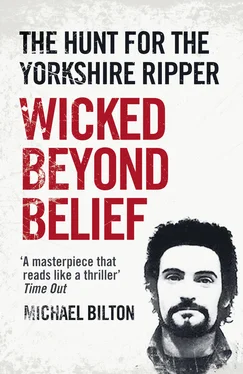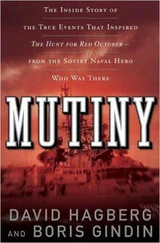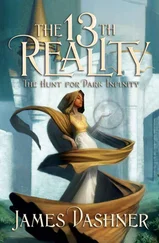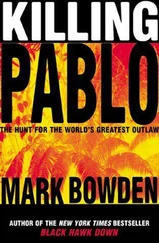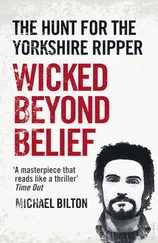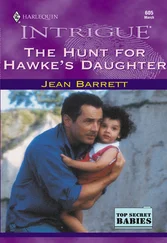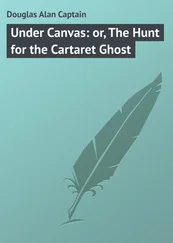Convinced the man who killed Richardson had to be bloodstained, Jim Hobson telexed a warning to all West Yorkshire divisions and surrounding forces to keep an eye out for anyone coming into custody with bloodstained clothing. He also wanted urgent inquiries made at local dry cleaners. One hundred officers then began house-to-house inquiries. Among those soon interviewed was one of Britain’s top television stars, Jimmy Savile, who lived in West Avenue, opposite the murder scene. He wasn’t at home at the crucial time, but when a neighbour gave him the news he was badly shaken and kept repeating: ‘This is terrible. It is a ghastly thing to happen practically in your own front garden.’ In the following weeks numerous men were hauled in and questioned closely; several items of potential suspect’s clothing were examined at the Harrogate laboratory, along with various pairs of shoes and a bloodstained raincoat retrieved from a dry cleaners in the centre of Leeds. Tools, hammers and knives were also handed over for scientific analysis. A fragmentary fingerprint found on a bus ticket near the scene could not be eliminated. Prostitutes in Leeds were asked to come forward if they had been ill-treated by their clients. Courting couples using Roundhay Park over the weekend were asked to report anything suspicious. None of these initiatives led anywhere. Hobson appealed directly to women not to accept lifts from strangers. The last thing he needed was another murder before they had exhausted all lines of inquiry from the current one.
Four days after Irene died, he sought the cooperation of the public in finding Marcella Claxton, who nine months previously had been attacked in virtually the same spot at Soldier’s Field. Now she had moved home and police couldn’t find her. The local press claimed it as ‘a carbon copy’ attack and reported that Marcella could hold vital clues to the killer’s identity. Hobson told reporters that there were striking similarities. Both women had been viciously attacked with a blunt instrument from the rear; both had clearly been picked up in Chapeltown for sex and taken to Roundhay Park, a favourite place for prostitutes to take their clients.
Hobson said of Marcella: ‘She could help us with vital clues to the identity. It is essential that we interview this woman in view of the recent murder. There may be some connection between the attack on her and the murder of Mrs Richardson.’ An eminent biographer once declared that although hindsight is often the last refuge of the instant historian, scorning hindsight is always the first escort of the evasive politician. He might also have said policeman. With the benefit of hindsight and twenty-five years on, Hobson’s prophetic comment seems like irony heaped upon irony. There was indeed a connection between the two events, but it was overlooked. Marcella Claxton had repeatedly told police that the man who attacked her had been driving a white car; so was the man who tried repeatedly to pick up a woman in Nassau Place, Chapeltown, not long before Irene Richardson was walking in the same area, probably half an hour before she was murdered. Even more damning, Marcella had helped prepare a photofit, but again its value to the investigation was never realized.
Later that day, Marcella spoke to detectives and repeated her description of the man in a white car who attacked her. But next morning at a press conference Hobson briefed the media saying Marcella had given them a description, ‘but this is not necessarily the description of the murderer [my italics]’. It was a comment hardly likely to inspire confidence. The public was told he was aged twenty-five to thirty-five, five feet nine inches tall, medium build, with dark wavy hair, who at the time of the assault was wearing a dark suit with a multicoloured shirt and tie. He was well spoken and drove a white car which was fairly new. Anyone recognizing this description was asked to contact the police immediately. Tragically, the detail police left out from Marcella Claxton’s description was that the man had a beard and a moustache. Nor did they issue to the press the photofit Marcella prepared on 10 May 1976, the day after she was attacked. It had been published in Police Reports, a confidential internal police publication sent to northern police forces, and in a separate police circular a week later. However, the public was never given the opportunity of seeing the actual photofit (which bore a stunning likeness to Sutcliffe). True, Marcella had problems selecting the components for the photofit, but when it was finished she was satisfied it was a good likeness of the man who tried to kill her. But Hobson was not convinced, and was moreover doubly concerned that the public could be misled if given the wrong information. The simple truth was that the West Yorkshire police did not believe what Marcella Claxton was telling them.
Ever cautious, Hobson repeated his warning to the ‘good time girls’ of Chapeltown to be wary of accepting lifts in cars: ‘From our observations taken over the last week it seems that women are still getting into cars in the area. I would again warn them of the dangers.’
Over the next few months, Leeds police mounted a crackdown on prostitutes in the Chapeltown area, arresting and issuing cautions to more than a hundred women. Hobson’s policy was to get sex workers out of the vice area, a policy which appeared to be working. ‘We have clamped down to try to get prostitutes off the streets,’ he said. ‘It is as much for their safety as anything else. We are making every effort to prevent another murder.’ If they insisted on plying their trade, he believed they should let one of their friends know where they were going, or take the car number. Then another tactic was tried. Special squads of police operating in the Chapeltown area noted the registration numbers of cars belonging to men cruising around looking for sex. A similar stratagem had been applied by the Metropolitan Police in London more than ten years previously during the hunt for the Thames nude prostitute murderer. In a proactive effort to apprehend the London killer, all the ‘pick-up’ places in Bayswater, Shepherd’s Bush and Notting Hill had been kept under observation. ‘A system of “flagging” was introduced whereby the same car in an area more than once became suspect, and if it appeared three times the driver was questioned.’ The operation was not a success.
Under some pressure from the media Hobson was extraordinarily open with information. The press knew the latest victim had head injuries, that her throat was cut and she had wounds to her stomach; they knew files from previous cases were being reviewed and a special watch was being kept on people driving through the Chapeltown red-light area. Hobson also informed the media of a possible connection with the murder of a prostitute in Preston, Lancashire. The Leeds Evening Post was able to inform readers on 8 February 1977, two days after Richardson’s body was found: ‘Police are comparing notes from the files of three brutal murders committed in the last 16 months – two in Leeds and one in Lancashire. In each case a prostitute was the victim.’
The next day the local Leeds evening newspaper gave more information: ‘Mr Hobson said Chief Supt. Brook from Lancashire who is leading investigations into the murder of a prostitute – Joan Harrison – who was found battered to death in Preston in November 1975, was travelling from Blackpool to Leeds today to liaise with Leeds detectives.’ Wilf Brooks, the head of Lancashire CID, had his meeting with Hobson, then left a file on the Harrison case for the Leeds CID chief to examine, ‘because of the striking similarities’, according to the Evening Post on the 10th.
The similarities were indeed striking: twenty-six-year-old Joan Harrison had no convictions for prostitution but had been cohabiting with several men. She had once been a houseproud mother, devoted to her children, but then her life appears to have descended into chaos. She was prepared to have sex to fund her chronic alcoholism and addiction to cough mixtures containing small doses of morphine, often getting through as many as eight bottles a day. She suffered severe head injuries when she was killed in a garage in Berwick Road, Preston, less than a month after Wilma McCann was murdered. Her body was found lying face down, covered by her coat. Her clothing appeared to have been displaced in a similar way to the West Yorkshire killings. She had been wearing two bras, both unfastened. The inner one had been pulled up over her breasts, leaving the outer one in position. The left leg was outside her pants and tights, with the trousers replaced on both legs and partly pulled up. Finally, and most intriguingly, her left boot had been placed tightly between her legs with the zip opened. But there were also several differences. Robbery was thought to be a motive. Her handbag and some of her possessions were missing, and several injuries were thought to be due to kicking or stamping to the head and body. There were no stab wounds and it was thought she had had sex immediately before she was killed. Brooks himself was not convinced of a link between the killings, neither was Hobson. The Lancashire CID chief was more intent on finding the man who had normal and anal intercourse with Joan Harrison. Semen traces were identified as being from a blood group B secretor and police began a mass screening of local men in the Preston area.
Читать дальше
